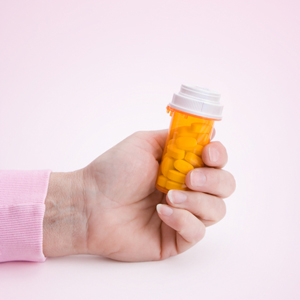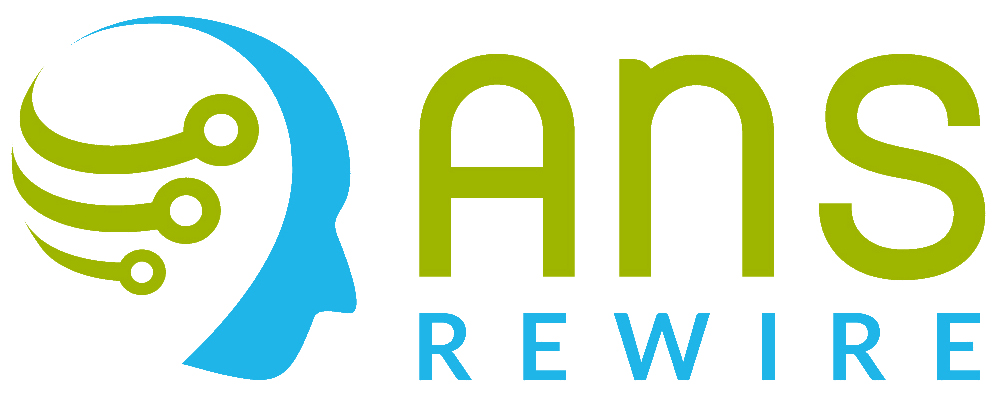developed by: Bernard Bihari, MD
 From LowDoseNaltrexone.org, a not-for-profit website sponsored by Advocates For Therapeutic Immunology (the authors of this site do not profit from the sale of low-dose naltrexone or from website traffic, and are in no way associated with any pharmaceutical manufacturer or pharmacy):
From LowDoseNaltrexone.org, a not-for-profit website sponsored by Advocates For Therapeutic Immunology (the authors of this site do not profit from the sale of low-dose naltrexone or from website traffic, and are in no way associated with any pharmaceutical manufacturer or pharmacy):
LDN may well be the most important therapeutic breakthrough in over fifty years. It provides a new method of medical treatment by mobilizing the natural defenses of one’s own immune system. — David Gluck, MD
Low Dose Naltrexone
FDA-approved naltrexone, in a low dose, can boost the immune system — helping those with HIV/AIDS, cancer, autoimmune diseases, and central nervous system disorders.
Anecdotal reports continue to be received concerning beneficial effects of LDN on the course of Parkinson’s disease, Alzheimer’s disease, amyotrophic lateral sclerosis (ALS—Lou Gehrig’s disease), and primary lateral sclerosis. Dr. Jaquelyn McCandless has found a very positive effect of LDN, in appropriately reduced dosage and applied as a transdermal cream, in children with autism.
Naltrexone itself was approved by the FDA in 1984 in a 50mg dose for the purpose of helping heroin or opium addicts, by blocking the effect of such drugs. By blocking opioid receptors, naltrexone also blocks the reception of the opioid hormones that our brain and adrenal glands produce: beta-endorphin and metenkephalin. Many body tissues have receptors for these endorphins and enkephalins, including virtually every cell of the body’s immune system.
In 1985, Bernard Bihari, MD, a physician with a clinical practice in New York City, discovered the effects of a much smaller dose of naltrexone (approximately 3mg once a day) on the body’s immune system. He found that this low dose, taken at bedtime, was able to enhance a patient’s response to infection by HIV, the virus that causes AIDS. [Note: Subsequently, the optimal adult dosage of LDN has been found to be 4.5mg.]
In the mid-1990’s, Dr. Bihari found that patients in his practice with cancer (such as lymphoma or pancreatic cancer) could benefit, in some cases dramatically, from LDN. In addition, people who had an autoimmune disease (such as lupus) often showed prompt control of disease activity while taking LDN.
Although prospective, controlled clinical trials on LDN in the treatment of cancer are yet to be accomplished, as of March 2004 clinical “off-label” use of this medication by Dr. Bihari in some 450 patients with cancer — almost all of whom had failed to respond to standard treatments — suggests that more than 60% of patients with cancer may significantly benefit from LDN.
Of the 354 patients with whom Dr. Bihari had regular follow-up, 86 have shown objective signs of significant tumor shrinkage, at least a 75% reduction. 125 patients have stabilized and/or are moving toward remission.
Dr. Bihari’s results sharply contrast to prior usual cancer treatment outcomes: either a cancer-induced death or a total cure. LDN therapy presents a viable third alternative, the possible long-term stabilization and/or gradual reduction of tumor mass volume.
Thus, with LDN, cancer can — in some cases — become a manageable chronic disease. Patients have the possibility of living free of symptoms, without, in many cases, the crippling side-effects of chemotherapy and radiation treatment.
A support group for LDN therapy has been set up on yahoogroups: Low Dose Naltrexone. See below for information on its application for specific conditions:
Amyotrophic Lateral Sclerosis (ALS)
Check the Patients Like Me online ALS community for more information on treatment protocols.
Autism
As of November 2005, evidence emerged for LDN use in autism. Jaquelyn McCandless, MD, reported in July, 2005 the results of an informal clinical study on 15 of her patients with autism, using low dose naltrexone (transdermally as a cream). According to McCandless, “8 of the 15 children had positive responses, with five of these 8 having results considered quite phenomenal according to their parents. The primary positive responses have been in the area of mood, cognition, language, and socialization. All participants who completed my study have indicated they wish to continue, and hundreds of other ASD kids have started this non-toxic, non-invasive, inexpensive intervention by now.”
Here is Dr. McCandless’ original essay on her results: Low Dose Naltrexone for Immunomodulation
A support group can be found at Autism_LDN yahoogroup.
Additional info can be found on Autism One Radio.
Autoimmune Disease
In general, in people with diseases that are partially or largely triggered by a deficiency of endorphins (including cancer and autoimmune diseases), or are accelerated by a deficiency of endorphins (such as HIV/AIDS), restoration of the body’s normal production of endorphins is the major therapeutic action of LDN.
There is growing recognition in the scientific community that autoimmune diseases result from immunodeficiency, which disturbs the ability of the immune system to distinguish “self” from “non-self”. The normalization of the immune system induced by LDN makes it an obvious candidate for a treatment plan in such diseases.
The experience of people who have autoimmune diseases and who have begun LDN treatment has been remarkable. Patients with diagnoses such as systemic lupus, rheumatoid arthritis, Behcet’s syndrome, Wegener’s granulomatosis, bullous pemphigoid, psoriasis, and Crohn’s disease have all benefited.
Over the past few years, growing experience with the clinical use of LDN demonstrates its consistency in preventing further attacks in people with Multiple Sclerosis (MS). In addition, a majority of such patients note reductions in spasticity and fatigue.
Cancer
Some of the cancers that benefit from LDN include: bladder cancer, breast cancer, carcinoid, colon & rectal cancer, glioblastoma, liver cancer, lung cancer (non-small cell), lymphocytic leukemia (chronic), lymphoma (hodgkin’s and non-hodgkin’s), malignant melanoma, multiple myeloma, neuroblastoma, ovarian cancer, pancreatic cancer, prostate cancer (untreated), renal cell carcinoma, throat cancer, and uterine cancer.
Chronic Fatigue Syndrome (CFS)
In contrast to fibromyalgia, the results of LDN treatment in chronic fatigue syndrome are slower and not as dramatic. In some 40 such patients, Dr. Bihari has generally seen a gradual decrease of about 50% in complaints of fatigue—a very few cases experienced an 80% to 90% decrease. Dr. Bihari has found that the best approach is to carefully investigate these patients for chronic infections: specific searches are made for chlamydia, mycoplasma, Epstein-Barr virus, and herpes virus 6. When patients are able to be treated specifically for an active infection, along with the LDN Rx, the responses are better.
Digestive Disease
Dr. Jill Smith’s original article, “Low-Dose Naltrexone Therapy Improves Active Crohn’s Disease,” in the January issue of the American Journal of Gastroenterology (2007;102:1–9), officially presents LDN to the world of scientific medicine. Smith, Professor of Gastroenterology at Pennsylvania State University’s College of Medicine, found that two-thirds of the patients in her pilot study went into remission and fully 89% of the group responded to treatment to some degree. She concluded that “LDN therapy appears effective and safe in subjects with active Crohn’s disease.”
Fibromyalgia (FMS)
As of March 2003, Dr. Bihari reported that he has treated 24 people with fibromyalgia, 22 of whom responded dramatically to low dose naltrexone treatment (4.5mg nightly). Within a few days those 22 patients experienced a decrease of some 80% to 95% in their muscle pains. This improvement has been sustained with continuing use of the LDN. The two exceptions were notable in that they had both been on narcotic pain medications for years prior to weaning off of the narcotics in order to switch to LDN treatment. Their responses were only fair at best.
photo credit: © Cathleen Clapper | Dreamstime.com








I know someone with MS who took a microdose of LDN and it brought on a flare-up of the illness. He’s been in bed for a month now. Just from one small dose. Be careful!!
It is actually noted on the LDN site that those with MS do initially experience an increase in symptoms, but that it passes shortly with continued treatment.
That might be true for some Travis. But my friend was near death from a microdose. There was no way he was going to continue treatment. He has suffered continuous seizures ever since. I think he has since gotten it under control using steroids but that is not ideal either….
Will LDN make any difference in cancers that are already chronic and manageable–specifically, Waldenstrom’s macroglobulinemia, an indolent lymphoma?
Sorry Gary, I am not an M.D. and I have no personal experience with using LDN for cancers. I would contact the non-profit group noted at the beginning of the above article and see if they have information on the cancer you are asking about. Good luck!
Any up dates on LDN and using it with Lyme an co. I do understand it can cause a herx at first,and those peeps that r sensitive take very tiny doses. And not to be taken if on Opioid’s. But then its says can help with oppiod withdrawels.